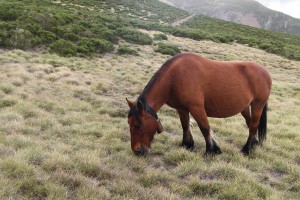 Soil is the major terrestrial reservoir of C. In spite of its obvious importance, there is a lack of knowledge about how climate change and land-use change interactions affect carbon cycle. The aim of this research line is to contribute to assess the vulnerability of soil carbon stocks in silvopastoral systems, by means of understand the mechanisms underlying soil carbon processes under different land uses and climatic change scenarios.
Soil is the major terrestrial reservoir of C. In spite of its obvious importance, there is a lack of knowledge about how climate change and land-use change interactions affect carbon cycle. The aim of this research line is to contribute to assess the vulnerability of soil carbon stocks in silvopastoral systems, by means of understand the mechanisms underlying soil carbon processes under different land uses and climatic change scenarios.
Related Projects:
CronoCarb. Captura de carbono en suelos agricolas reforestados: estabilizacion del C capturado por proteccion fisica. Ministerio de Educación y Ciencia. 2010-2013
GHG-Europe. Greenhouse gas management in European land use systems. European Comission. EU-RTD integrated project. VII FP. 2010-2013.
VULCA. Vulnerabilidad del C edáfico al cambio climático y de uso del suelo en ecosistemas pastorales: Efectos del cambio en el régimen de precipitación en pastos abandonados o quemados. Ministerio de Educación y Ciencia. 2006-2008.
Selected related papers are:
Garcia-Pausas J, Romanyà J, Montané F, Ríos A, Taull M., Rovira P, Casals P, 2017. Are soil carbon stocks in mountain grasslands compromised by land-use changes?. In Jordi Catalan, Josep Mª Ninot, Merce Aniz (Eds.) High Mountain Conservation in a Changing World. Advances in Global Change Research. Springer Open 9, pp. 207 -230.
Casals P, Lopez-Sangil L, Carrara A, Gimeno C, Nogués S, 2011. Autotrophic and heterotrophic contributions to short-term soil CO2 efflux following simulated summer precipitation pulses in a Mediterranean dehesa. Global Biogeochemical Cycles, 25, GB 3012, doi:10.1029/2010GB003973
Casals P, Garcia-Pausas J, Montané F, Romanyà J, Rovira P, 2010 Root decomposition in grazed and abandoned Mediterranean and mountain grasslands estimated by standard labelled roots. Agriculture, Ecosystems and Environment, 139, 759-765
Rovira P, Rovira R. 2010. Mathematical description of litter decomposition: Towards a generalised exponential approach. Geoderma, 155: 329-343.
Rovira P, Jorba M, Romanyà J. 2010. Active and passive organic matter fractions in Mediterranean forest soils. Biology and Fertility of Soils, 46, 355-369.
Duguy B, Rovira P, 2010. Differential thermogravimetry and differential scanning calorimetry of soil organic matter in mineral horizons: effects of wildfires and land use. Organic Geochemistry, 41, 742-752.
Casals P, Gimeno C, Carrara A, Lopez-Sangil L, Sanz MJ. 2009. Soil CO2 efflux and extractable organic carbon fractions under simulated precipitation events in a Mediterranean Dehesa. Soil Biology and Biochemistry, 41: 1915-1922.
Reichstein M., Rey A., Freibauer A., Tenhunen J., Valentini R., Banza J., Casals P., Cheng Y., Grünzweig J.M., Irvine J., Joffre R., Law B.E., Loustau D., Miglietta F., Oechel W., Ourcival J.M., Pereira J.S., Peressotti A., Ponti F., Qi Y., Rambal S., Rayment M., Romanya J., Rossi F., Tedeschi V., Tirone G., Xu M. Yakir D. 2003. Modelling temporal and large-scale spatial variability of soil respiration from soil water availability, temperature and vegetation productivity indices. Global Biogeochemical Cycles, 17(4), 15-11 – 15-15
Coûteaux M.M., Bottner P., Anderson J.M., Berg B., Bolger T., Casals P., Romanyà J., Thiéry J.M., Vallejo V.R. 2001. Decomposition of 13C labelled standard plant material in a latitudinal transect of European coniferous forests: Differential impact of climate on the decomposition of soil organic mater compartments. Biogeochemistry, 54: 147-170